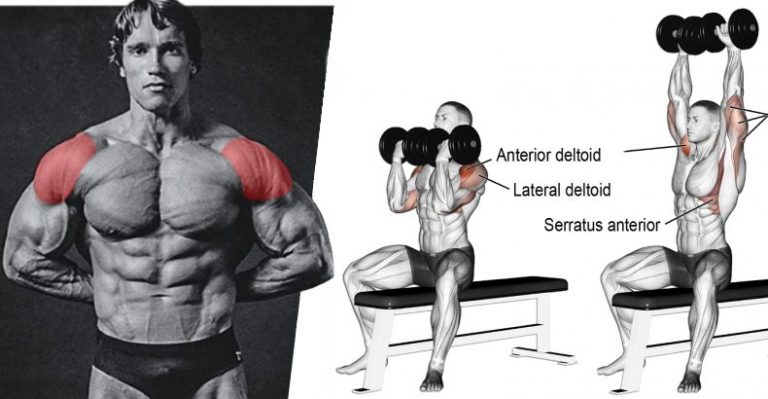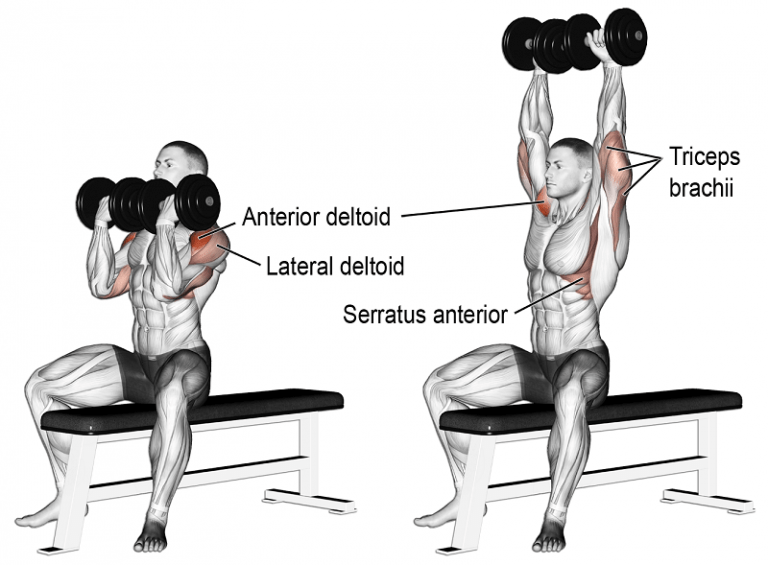The Arnold Press, named after the famous bodybuilder Arnold Schwarzenegger, is a popular exercise for building strength and size in the shoulders. This exercise is a variation of the traditional shoulder press and targets different muscles in the shoulders, arms, and upper back. In this article, we will explore the muscles involved in the Arnold Press and how to perform it properly.
Primary Muscles Worked

The primary muscles worked in the Arnold Press are the deltoids, which are the three main muscles that make up the shoulder: the anterior deltoid, medial deltoid, and posterior deltoid. The anterior deltoid is responsible for raising the arm forward, the medial deltoid raises the arm sideways, and the posterior deltoid raises the arm backward. The Arnold Press targets all three of these muscles, making it a great exercise for overall shoulder development.
Secondary Muscles Worked

In addition to the deltoids, the Arnold Press also works several other muscles in the shoulders and upper back. These include the trapezius, which is the large muscle that runs from the neck to the shoulders and helps to stabilize the shoulders during the exercise. The rotator cuff muscles, which are a group of four muscles that help to rotate the arm and stabilize the shoulder joint, are also worked during the Arnold Press. Finally, the biceps and triceps in the arms are also activated to help lift and stabilize the weight.
How To Perform The Arnold Press

To perform the Arnold Press, follow these steps:
- Start by sitting on a bench or standing with your feet shoulder-width apart and a dumbbell in each hand.
- Hold the dumbbells at shoulder level with your palms facing your body and your elbows bent.
- Slowly lift the dumbbells up and out to the sides while rotating your palms so that they face forward.
- Continue to lift the dumbbells up and overhead while rotating your palms so that they face each other at the top of the movement.
- Lower the dumbbells back down to shoulder level while reversing the motion.
- Repeat for the desired number of repetitions.
Tips For Proper Form

To get the most out of the Arnold Press and avoid injury, keep these tips in mind:
- Start with a weight that is comfortable for you and gradually increase as you become stronger.
- Engage your core muscles to help stabilize your body during the exercise.
- Keep your elbows slightly in front of your body throughout the movement to help activate the front deltoids.
- As you lift the dumbbells overhead, be sure to keep your shoulders down and avoid shrugging them up towards your ears.
- Lower the dumbbells down to shoulder level in a controlled manner and avoid letting them drop or bounce.
Variations Of The Arnold Press

There are several variations of the Arnold Press that you can try to target different areas of the shoulders and upper back. These include:
- Single-Arm Arnold Press: Perform the Arnold Press with one arm at a time to increase core stability and balance.
- Seated Arnold Press: Perform the Arnold Press while seated to reduce lower back strain and improve posture.
- Arnold Press With Twist: Perform the Arnold Press with a twist at the top of the movement to target the oblique muscles and improve core strength.
Conclusion
The Arnold Press is a highly effective exercise for building strength and size in the shoulders, arms, and upper back. By targeting the three main muscles in the shoulder and several other supporting muscles, this exercise can help to improve your posture, increase your range of motion, and reduce your risk of injury. By following proper form and incorporating variations into your routine, you can continue to challenge your muscles and see continued progress over time.